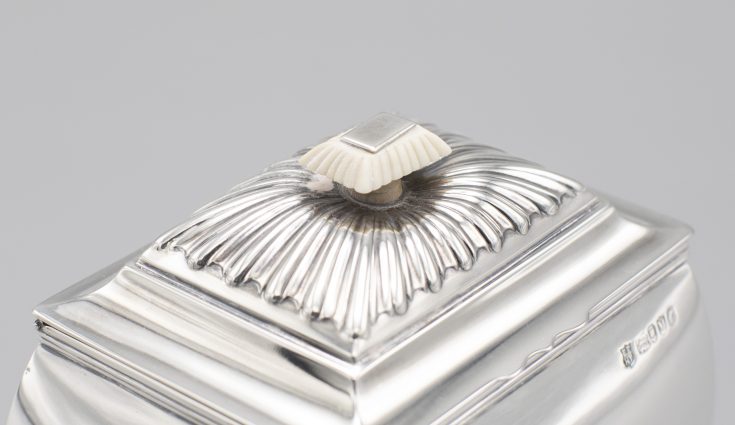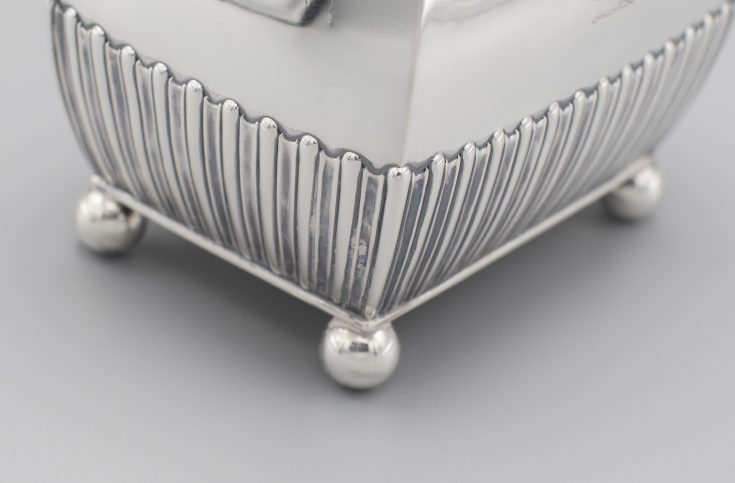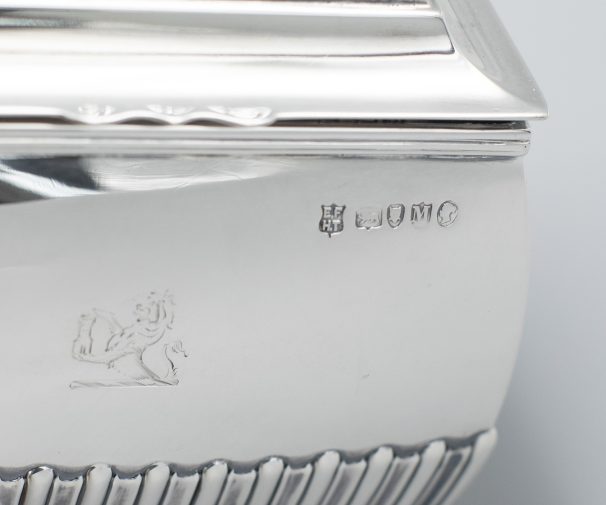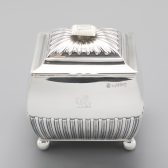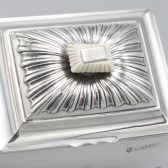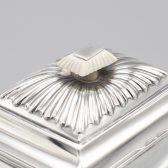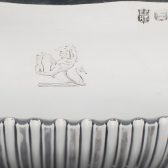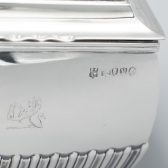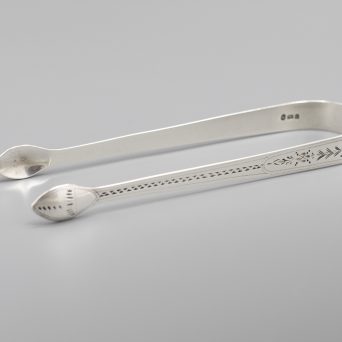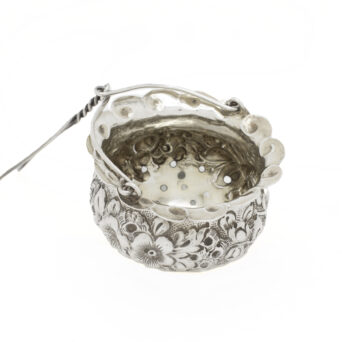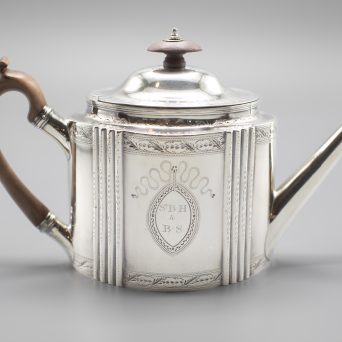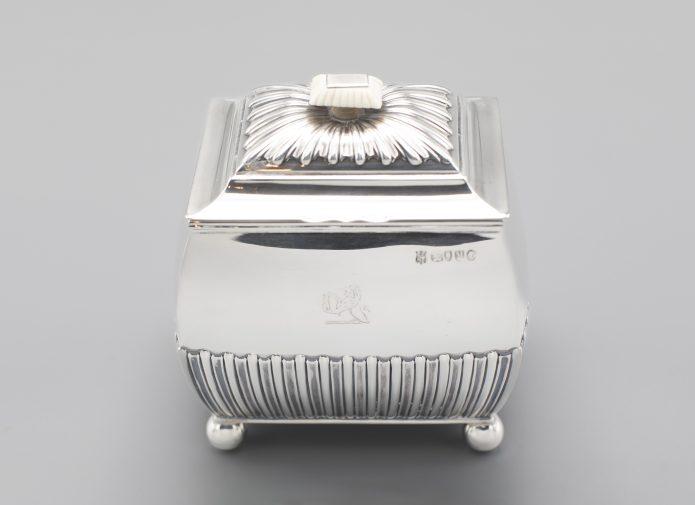
Antique Victorian Sterling Silver Tea Caddy
When tea was first introduced to England in the 1700s, it was an expensive commodity. In order to keep the tea safe as well as fresh, people use to store it in a tea chest or tea box, which later became known as a tea caddy.
Tea Caddies were generally kept in the drawing room due to the high cost of the tea which made leaving them in the presence of servants a risky proposition. As a result of this, the tea caddy became a practical, fashionable, and desirable accessory for the home. Tea Caddies were made in a wide variety of styles, sizes, shapes, and materials. Some caddies included glass bowls for sugar. These glass bowls were superbly cut with beautiful designs. Early in the 1800s, when tea became less expensive, tea caddies became more widespread. By the late 1800s, tea had become so readily available and thus, tea caddies were not needed as before. Therefore, there was very little demand for them. In today’s life style, tea caddies are found in all shapes and materials and are now purchased as decorative items.
A very attractive Antique Victorian Sterling Silver Tea Caddy which is ornamented with a semi fluted design. This is found on both the lower portion of the tea caddy as well as on the cover. The tea caddy resides on four ball feet and is slightly wider and longer on the body.
Antique Silver Tea Caddies, no matter the size or how intricate the detail work is, remain quite popular today. Although we may never go back like our predecessors did and use them to store tea, they have become a precious commodity in their own right.


